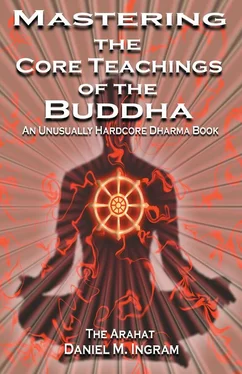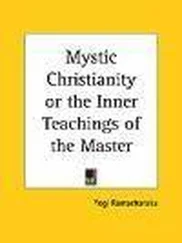Daniel Ingram - Mastering the Core Teachings of Buddha - An Unusually Hardcore Dharma Book
Здесь есть возможность читать онлайн «Daniel Ingram - Mastering the Core Teachings of Buddha - An Unusually Hardcore Dharma Book» весь текст электронной книги совершенно бесплатно (целиком полную версию без сокращений). В некоторых случаях можно слушать аудио, скачать через торрент в формате fb2 и присутствует краткое содержание. Год выпуска: 2009, ISBN: 2009, Издательство: Aeon Books, Жанр: Старинная литература, на русском языке. Описание произведения, (предисловие) а так же отзывы посетителей доступны на портале библиотеки ЛибКат.
- Название:Mastering the Core Teachings of Buddha - An Unusually Hardcore Dharma Book
- Автор:
- Издательство:Aeon Books
- Жанр:
- Год:2009
- ISBN:9781904658405
- Рейтинг книги:5 / 5. Голосов: 1
-
Избранное:Добавить в избранное
- Отзывы:
-
Ваша оценка:
- 100
- 1
- 2
- 3
- 4
- 5
Mastering the Core Teachings of Buddha - An Unusually Hardcore Dharma Book: краткое содержание, описание и аннотация
Предлагаем к чтению аннотацию, описание, краткое содержание или предисловие (зависит от того, что написал сам автор книги «Mastering the Core Teachings of Buddha - An Unusually Hardcore Dharma Book»). Если вы не нашли необходимую информацию о книге — напишите в комментариях, мы постараемся отыскать её.
Mastering the Core Teachings of Buddha - An Unusually Hardcore Dharma Book — читать онлайн бесплатно полную книгу (весь текст) целиком
Ниже представлен текст книги, разбитый по страницам. Система сохранения места последней прочитанной страницы, позволяет с удобством читать онлайн бесплатно книгу «Mastering the Core Teachings of Buddha - An Unusually Hardcore Dharma Book», без необходимости каждый раз заново искать на чём Вы остановились. Поставьте закладку, и сможете в любой момент перейти на страницу, на которой закончили чтение.
Интервал:
Закладка:
The Vipassana Jhanas
artificially solidifying, as it is so tempting to do so. Going the other way, if we have some mastery of a set of insight stages, we can use these stages to learn get into samatha jhanas by concentrating on solidifying their predominant positive qualities.
There are also those who say that the jhanas and stages of insight do not line up at all, but this is too doctrinal, not in accord with what one experiences on the cushion (or in some other posture), and doesn't help resolve the problems created in the original texts of the Pali Canon. For those who are still die hard traditionalists and believe that the jhana terminology only applies to pure concentration practices, I offer the following quote from the Buddha that is found in my favorite sutta,
#111, One by One as They Occurred, in The Middle Length
Discourses of the Buddha, as translated by Bhikkhu Ñanamoli and Bhikkhu Bodhi:
“And the states in the first jhana – the applied thought, the sustained thought, the rapture, the pleasure, and the unification of mind; the contact, feeling, perception, volition, and mind; the zeal, decision, energy, mindfulness, equanimity and attention – these states were defined by him one by one as they occurred; known to him they arose, known to him they were present, known to him they disappeared. He understood thus: ‘So indeed, these states, not having been, come into being; having been, they vanish.’”
Those with traditional views can squirm and pontificate any way they like, but this guy is clearly maintaining an extremely fast, consistent and precise investigation of impermanence and is thus clearly doing insight practices.
To digress for just a moment into another rant, the guy the Buddha is talking about here is none other than my hero, Sariputta, who incidentally is often the whipping boy of much ridiculous and degrading Mahayana propaganda. Don’t get me wrong, the Mahayana has done some great things in its day, but ragging on someone with this level of skill and insight is just hypocritical and arrogant beyond reason. The Buddha says that Sariputta goes on to do very precise and powerful insight practices high up into the formless realms and attains to very liberating insights. I often hear Nouveau Tibetan Buddhists making comments that clearly indicate that they feel themselves to be quite 218
The Vipassana Jhanas
qualified to denigrate his practice and don’t seem to notice how ironic this is, as they are almost always those whose own spiritual progress doesn’t qualify them to lick the muddy sandals of someone with a fraction of Sariputta’s talents. When one in a thousand of the meditators I meet who make these absurd and insulting statements about Sariputta can do what he could do or understand what he understood, I’ll eat this book. You have no idea how good it feels to write paragraphs like this one.
Back to business. All of this map stuff is only helpful if it keeps you practicing clearly and in a way that brings results. I will discuss more of the pros and cons of maps soon enough.
BILL HAMILTON’S MODEL
The vipassana jhana model I like the most because it is the one that most clearly fits with my extensive investigation of the vipassana jhanas is the one that was used by the late, great Bill Hamilton. He was also quite a mighty meditator in his own right, if a highly under-appreciated one.
True, he was a quirky old bat on a good day, but he also died an arahat and a mighty scholar who had complete mastery of the formless realms.
There was nothing particularly spectacular about Bill’s life other than his understanding of it, and he died in poverty and obscurity in basic denial of the severity of his pancreatic cancer. I have never met anyone who had given the question of the vipassana jhanas more consideration, and his fascination with complex models was remarkable. A quick digression here about Bill, as I did dedicate this book to his memory...
Bill Hamilton was not only a meditation master, he was also a rogue teacher and basically felt like an outcast from the modern international Vipassana community. The guy was basically too smart, too
uncompromising, too scholarly, and too dedicated to non-watered-down dharma and to absolute mastery to be a popular mainstream teacher.
He didn’t teach to make people feel good about themselves, with friends, or attain to power, fame or money.
His obscurity was a tragic loss for the many people who didn't know about him. However, for me and a few others who knew about him and were willing to put up with the fact that he was basically a strange, suspicious, perhaps paranoid, and fairly quirky dude, Bill Hamilton was just what we were looking for.
219
The Vipassana Jhanas
Bill seemed to live for the sole purpose of sharing his dharma rather than for flying around the world, making money, or being popular.
Unlike the few other Western dharma teachers with his level of mastery, you could call Bill on the phone and talk for hours about this stuff, and then you could do it again. His very unpopularity made him a true and accessible teacher. The other nice things about Bill were that he would talk about actual mastery (though you had to drag it out of him) and also had incredibly high standards that I found quite refreshing.
Bill also taught in a very interesting way. His style was basically to seem extremely skeptical that any of your descriptions of any experiences could really have anything to do with the attainment of anything. This was basically quite irritating, but it made his students question deeply whether or not they were really experiencing what they thought they were and so look more deeply at the truth of each moment. It also served as a helpful counterbalance to his interest in models and specifically named levels of attainment. His teaching style didn't win him many friends, but it was powerful and served his ends.
Part of my fantasy is that a bit of his edge, uncompromising attitude and deep understanding may have come through in this work, though it must be stated explicitly that Bill never let on that he was particularly impressed with anything I ever described in my own practice.
Back to discussing Bill's Vipassana Jhana model. The table below explains which ñanas fall into which jhanas, and is a re-arrangement of the table in the beginning of the chapter on the Progress of Insight: Vipa ssa na Jhana Ñanas
First
1-3: Mind and Body, Cause and Effect, Three
Characteristics
Second
4: The Arising and Passing Away
Third
5-10: The Dark Night
Fourth-Eighth
11-14: Equanimity, Conformity, Change of Lineage,
Path
Thus, when in each of those ñanas, one can learn something from its jhana aspect, and when in each of the jhanas one can notice what insight territory is available there. Further, as the division between 220
The Vipassana Jhanas
samatha and vipassana is actually not nearly so straightforward as some would make it out to be, there can be a lot of natural movement back and forth that can occur between vipassana jhanas and samatha jhanas even when trying to keep to just one side. As the Three Characteristics are always presenting themselves, even in seemingly created, blissful, stable samatha territory, those with strong mindfulness and
concentration may have to work to avoid perceiving them. Also, those doing strong insight practice may again and again chance into territory that has a more samatha feel, and if they are expecting things to be purely by the ñana descriptions they may get lost or confused by this.
Lastly, those who have attained at least stream entry are constantly cycling through the ñanas from the 4th to the 11th and then to Fruition, so even if they try to do pure samatha practice, the pull towards each next ñana/vipassana jhana is strong, and they basically are always from then on doing some fusion of the two even when they try to keep things purely on the samatha side.
Читать дальшеИнтервал:
Закладка:
Похожие книги на «Mastering the Core Teachings of Buddha - An Unusually Hardcore Dharma Book»
Представляем Вашему вниманию похожие книги на «Mastering the Core Teachings of Buddha - An Unusually Hardcore Dharma Book» списком для выбора. Мы отобрали схожую по названию и смыслу литературу в надежде предоставить читателям больше вариантов отыскать новые, интересные, ещё непрочитанные произведения.
Обсуждение, отзывы о книге «Mastering the Core Teachings of Buddha - An Unusually Hardcore Dharma Book» и просто собственные мнения читателей. Оставьте ваши комментарии, напишите, что Вы думаете о произведении, его смысле или главных героях. Укажите что конкретно понравилось, а что нет, и почему Вы так считаете.












